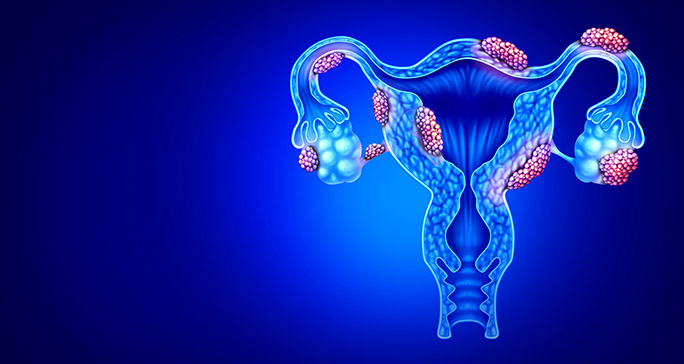- Diseases
- Acoustic Neuroma (14)
- Adrenal Gland Tumor (24)
- Anal Cancer (68)
- Anemia (2)
- Appendix Cancer (16)
- Bile Duct Cancer (26)
- Bladder Cancer (72)
- Brain Metastases (28)
- Brain Tumor (232)
- Breast Cancer (714)
- Breast Implant-Associated Anaplastic Large Cell Lymphoma (2)
- Cancer of Unknown Primary (4)
- Carcinoid Tumor (8)
- Cervical Cancer (158)
- Colon Cancer (166)
- Colorectal Cancer (116)
- Endocrine Tumor (4)
- Esophageal Cancer (44)
- Eye Cancer (36)
- Fallopian Tube Cancer (8)
- Germ Cell Tumor (4)
- Gestational Trophoblastic Disease (2)
- Head and Neck Cancer (12)
- Kidney Cancer (128)
- Leukemia (342)
- Liver Cancer (50)
- Lung Cancer (286)
- Lymphoma (278)
- Mesothelioma (14)
- Metastasis (30)
- Multiple Myeloma (100)
- Myelodysplastic Syndrome (60)
- Myeloproliferative Neoplasm (4)
- Neuroendocrine Tumors (16)
- Oral Cancer (100)
- Ovarian Cancer (172)
- Pancreatic Cancer (160)
- Parathyroid Disease (2)
- Penile Cancer (14)
- Pituitary Tumor (6)
- Prostate Cancer (146)
- Rectal Cancer (58)
- Renal Medullary Carcinoma (6)
- Salivary Gland Cancer (14)
- Sarcoma (238)
- Skin Cancer (296)
- Skull Base Tumors (56)
- Spinal Tumor (12)
- Stomach Cancer (64)
- Testicular Cancer (28)
- Throat Cancer (92)
- Thymoma (6)
- Thyroid Cancer (96)
- Tonsil Cancer (30)
- Uterine Cancer (80)
- Vaginal Cancer (16)
- Vulvar Cancer (20)
- Cancer Topic
- Adolescent and Young Adult Cancer Issues (20)
- Advance Care Planning (10)
- Biostatistics (2)
- Blood Donation (18)
- Bone Health (8)
- COVID-19 (362)
- Cancer Recurrence (120)
- Childhood Cancer Issues (120)
- Clinical Trials (630)
- Complementary Integrative Medicine (22)
- Cytogenetics (2)
- DNA Methylation (4)
- Diagnosis (232)
- Epigenetics (6)
- Fertility (62)
- Follow-up Guidelines (2)
- Health Disparities (14)
- Hereditary Cancer Syndromes (126)
- Immunology (18)
- Li-Fraumeni Syndrome (8)
- Mental Health (116)
- Molecular Diagnostics (8)
- Pain Management (62)
- Palliative Care (8)
- Pathology (10)
- Physical Therapy (18)
- Pregnancy (18)
- Prevention (914)
- Research (392)
- Second Opinion (74)
- Sexuality (16)
- Side Effects (604)
- Sleep Disorders (10)
- Stem Cell Transplantation Cellular Therapy (216)
- Support (402)
- Survivorship (320)
- Symptoms (182)
- Treatment (1786)
Setting new life goals after uterine cancer and a total hysterectomy
5 minute read | Published January 06, 2020
Medically Reviewed | Last reviewed by an MD Anderson Cancer Center medical professional on January 06, 2020
I’ve always wanted to be a mom. I became an aunt at a very young age, and I loved taking care of my nieces and nephews. I worked at a child welfare organization throughout high school, too, so kids have always been a part of my life.
That’s why finding out I had stage II uterine cancer in August 2016 was a pretty bitter blow. By the time I was diagnosed at age 31, it had already spread to my cervix and both ovaries. My best chance at a cure was a total hysterectomy followed by radiation therapy. The surgery alone would send me into immediate menopause — and end my dreams of having biological children.
Choosing to have the surgery anyway was not an easy decision, but it was one my husband and I agreed upon. I’m still making my peace with it. Some days, I am perfectly content. Others, not so much.
The one thing I have no regrets about is going to MD Anderson for my uterine cancer treatment. It’s 600 miles away from my home, but three years later, I’m still here — and cancer-free — because of it.
My uterine cancer diagnosis
My husband and I had been trying to conceive naturally for quite a while by the time I was diagnosed. My regular gynecologist had been on my case for years to see a fertility specialist. I finally agreed in July 2016.
The specialist performed a pelvic sonogram as a routine part of our first consultation. The scan revealed multiple ovarian cysts and several uterine fibroids. Since I have a history of ovarian cysts, he gave me one more menstrual cycle to see if they resolved on their own. Instead, the growths multiplied.
He ordered a biopsy, and we got the results on August 26. That’s when I learned I had uterine cancer.
Why I chose MD Anderson
My local specialist told me that in more than 30 years of practice, he’d never seen another case of uterine cancer like mine. Normally, it appears in extremely obese women, in their mid-to-late 50s. I didn’t meet either of those criteria, so my situation was pretty unusual.
The doctor suggested I go to MD Anderson. “They are the top of the mountain,” he told me. “And you will get the best care and treatment down there.”
I called the next day and made an appointment. The following week, my husband and I made the 11-hour drive to Houston.
My uterine cancer treatment
At MD Anderson, we met with Dr. Pamela Soliman. First, she asked us about our plans for a family. Then, she asked if she could present my case to a group of gynecologic oncologists during their regular weekly check-in.
We really liked the fact that Dr. Soliman wanted to get other experts’ opinions before making a treatment recommendation. She took the time to talk things through with us and answered all of our questions. We never felt rushed or uncomfortable.
My husband and I decided there were other ways for us to have kids. So, we told Dr. Soliman our priority was clearing this cancer hurdle first. She consulted her colleagues and gave us her recommendation: a total hysterectomy, followed by five weeks of radiation therapy under Dr. Anuja Jhingran as “an insurance policy.”
I trusted Dr. Soliman. So, I had the hysterectomy on Oct. 14, 2016, and my last radiation treatment on Dec. 16, 2016.
A new life perspective after cancer
Since then, my husband and I have been looking at my cancer diagnosis as a wake-up call. It’s a chance to re-ground ourselves and reconsider our priorities. He stepped down from his position as captain to become a firefighter again, because that’s what he enjoys. I took on a new role at my job, too, so we could schedule more weekend getaways.
I’ve also taken more responsibility for my health, because after completing treatment, a previous back injury got worse. I ended up needing surgery to repair a collapsed disc, so I wasn’t able to burn off stress through exercise for about two years. That left me both at the heaviest weight I’d ever been and really depressed.
I started going to physical therapy, which helped a lot. I liked it so much that I decided to obtain certification in personal training and corrective exercise. I’m finally at a point now where I’m able to lift heavy weights again and train as hard as I want to, so I’ve also entered a local bodybuilding competition.
Finding the silver lining and paying it forward
I needed a goal I could work toward, and bodybuilding felt like something I could do just for me. In taking on this challenge, I’m also showing others they can do more than they think, even after cancer. As big as cancer can be, it’s not something to hold you back. And I will not let it define or limit me.
My cancer diagnosis has given me a completely different outlook on life. I take it one day at a time now, and I try not to stress about what’s coming next. It hasn’t been easy. But I feel like I’ve found the silver lining in exploring ways to give back to others.
So many people have been in my corner supporting me and my husband. Now, I want to pass that on to others as a personal trainer. People often come into their workouts stressed or frustrated. But they leave feeling much better and in a more positive frame of mind. It’s humbling to know I can have that impact. So, I plan to keep doing this as long as possible.
Request an appointment at MD Anderson online or by calling 1-877-632-6789.

I’m still making my peace with it.
Callie Glaves
Survivor





